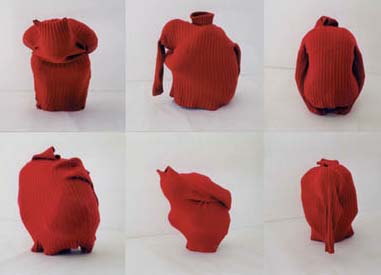Erwin Wurm
dal 24/1/2002 al 31/3/2002
Segnalato da
24/1/2002
Erwin Wurm
Neue Galerie, Graz
Fat Survival. As a consequence the human body re-entered the picture. Using furniture meant sitting on it etc, hence anthropomorphism and the world of the concrete met in contemporary sculpture. Wurm was one of the pioneers of this act reconciliation. His use of media such as video and photography is unique. These media allowed him to introduce new parameters of sculpture such as duration alongside the classic ones like gravitation, weight, statics, stability, equilibrium, materiality and form. Curator: Peter Weibel

In its first phase, the development of sculpture in the 20 century was characterised by detachment from the human body. In Brancusi's work, the human head becomes increasingly geometric and ultimately egg-shaped. This process was called abstraction, meaning abstraction from human dimensions.
After this phase of loss of the human proportion in sculpture, this 'dehumanisation' as the process was
referred to in conservative cultural critique, followed the second phase, the concretisation of sculpture. All
things could be called a sculpture: sculpture as an object from urinal to bicycle. In the 1980s furniture
established itself as part of the sculptural world of objects. The abstract object became an article of
everyday use. Furniture sculpture was both an object of everyday use and sculpture.
As a consequence the human body re-entered the picture. Using furniture meant sitting on it etc, hence
anthropomorphism and the world of the concrete met in contemporary sculpture. Wurm was one of the
pioneers of this act reconciliation. His use of media such as video and photography is unique. These
media allowed him to introduce new parameters of sculpture such as duration alongside the classic ones
like gravitation, weight, statics, stability, equilibrium, materiality and form. Human bodies, connected with
objects and holding positions they could only maintain for minutes, are ideal expansions of sculpture into
the field of media.
Peter Weibel
Image: Erwin Wurm, without title, 6 Pullover-Sculptures, 2000
Exhibition site: Neue Galerie Graz, Sackstrasse 16, 8010 Graz
Opening times: 26th January - 31st March 2002
Tue - Sun 10am - 6pm, Thu 10am - 8pm



